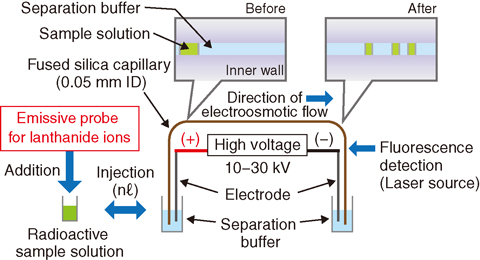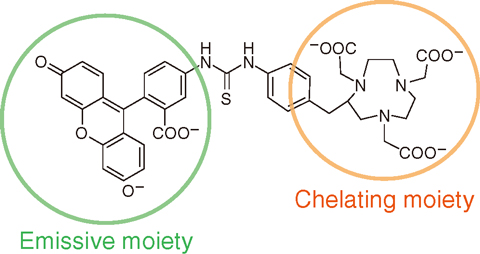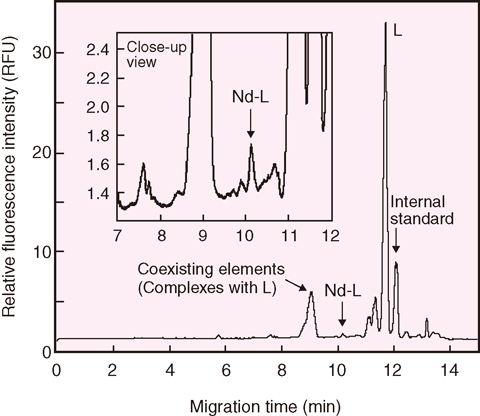
Fig.8-8 Development of a simple and rapid analytical method with CE

Fig.8-9 Emissive probe L for a Nd ion

Fig.8-10 Typical electropherogram of a Nd complex with probe L
For safe disposal of radioactive waste, it is necessary to understand their nuclide compositions. It has been suggested that the nuclide composition in contaminated wastes generated from spent nuclear fuel reprocessing facilities can be estimated from the concentration of neodymium (Nd) related to the burnup (degree of fuel consumption). For the analysis of the Nd in spent nuclear fuel samples, it has to be separated from various other coexisting elements, especially lanthanides (Ln) with similar chemical properties and the large excess of uranium (U) in the sample. To reduce the radiation exposure of operators during the analytical procedure, a simple and rapid analytical method with capillary electrophoresis (CE) has been developed (Fig.8-8); however, the conventional CE method using absorbance detection has a sensitivity that is too low.
This study focuses on the CE-laser-induced fluorescent detection method (CE-LIF) to drastically improve the sensitivity. Emissive probes for detecting Ln ions, especially Nd ions, suitable for CE-LIF were developed. The emissive probes designed for CE-LIF are composed of an emissive moiety for improving sensitivity, a chelating moiety for connecting with Ln ions, and a spacer between them. The chelating moiety, which is most important, is required for high selectivity of Ln as compared with U. In this study, a cyclic hexadentate probe is synthesized (Fig.8-9). We find that each Ln complex with the probe moved at a different electrophoretic speed by reaction with hydroxide ions in the separation buffer. A suitable pH of the separation buffer enabled a successful detection and separation of Nd in a spent nuclear fuel sample (Fig.8-10). This method with small sample volume and a short analytical time (about ten minutes) has great potential to be applied to analysis of radioactive waste samples for reducing the radiation exposure of operators.
This study was accomplished as part of a collaborative research with Saitama University, entitled “Separation and Detection System for Actinide Ions by Capillary Electrophoresis using Novel fluorescent Probes”.